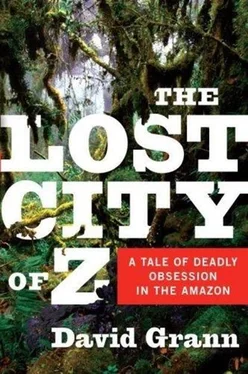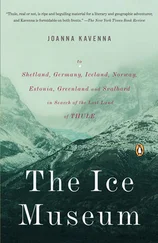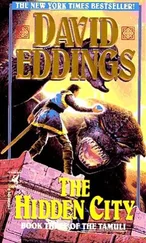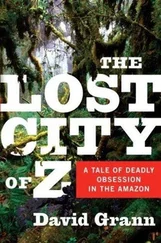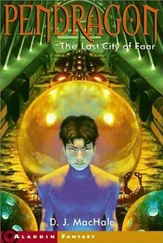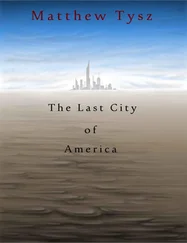“The strain has always been too much for members of my own parties,” Fawcett informed Keltie, adding, “I have no mercy for incompetence.”
Keltie gently chided his friend: “I am very glad to think that you are keeping so very fit. You must have a wonderful constitution to stand all that you have stood and be none the worse. I am afraid this makes you perhaps a little intolerant of men who are not so very fit as you are.”
Keltie no doubt had in mind one man in particular, an explorer whose collaboration with Fawcett, in 1911, ended in catastrophe.
IT SEEMED LIKE the perfect match: James Murray, the great polar scientist, and Fawcett, the great Amazon explorer. Together, they would break through hundreds of miles of unexplored jungle surrounding the Heath River along Bolivia's northwestern border with Peru, to map the region and study its inhabitants and wildlife. The Royal Geographical Society had encouraged the excursion, and why not?
Born in Glasgow in 1865, Murray was the brilliant, peripatetic son of a grocer who, as a young man, had become obsessed with the recent discovery of microscopic creatures and, armed with little more than a microscope and a collecting jar, transformed himself into a virtually self-taught, world-renowned expert in the field. In 1902, he helped survey the muddy depths of the Scottish lochs. Five years later, Ernest Shackle-ton enlisted Murray for his expedition to Antarctica, where he carried out groundbreaking recordings on marine biology, physics, optics, and meteorology. Afterward, he co-wrote a book called Antarctic Days, which described hauling a sled across the snow: “Pulling, you are uncomfortably hot, resting, you are uncomfortably cold. Always, you are hungry. Ahead is the barrier surface, stretching away to the horizon.” Voraciously curious, vainglorious, rebellious, eccentric, daring, autodi-dactic: Murray seemed like Fawcett's doppelgänger. He was even an artist. And in September 1911, when Murray arrived at San Carlos, an outpost on the Bolivian-Peruvian border, Fawcett proclaimed in a lette rto the Royal Geographical Society, “He is an admirable man for the job.”
But had anyone peered closer at their characters he might have seen warning signs. Although only two years older than Fawcett, Murray, at forty-six, looked crumpled and wizened; his face, with its well-trimmed mustache and graying hair, was filled with crags, his body was ill shapen. During the Scottish expedition, he had suffered a physical breakdown. “I had had rheumatism, inflamed eyes, and God knows what not,” he said. On the Shackleton expedition, he had been in charge of the base camp and had not endured the most brutal conditions.
Moreover, the qualifications for a great polar explorer and for an Amazon one are not necessarily the same. Indeed, the two forms of exploration are, in many ways, the antithesis of each other. A polar explorer has to endure temperatures of nearly a hundred degrees below zero, and the same terrors over and over: frostbite, crevices in the ice, and scurvy. He looks out and sees snow and ice, snow and ice-an unrelenting bleakness. The psychological horror is in knowing that this landscape will never change, and the challenge is to endure, like a prisoner in solitary confinement, sensory deprivation. In contrast, an Amazon explorer, immersed in a cauldron of heat, has his senses constantly assaulted. In place of ice there is rain, and everywhere an explorer steps some new danger lurks: a malarial mosquito, a spear, a snake, a spider, a piranha. The mind has to deal with the terror of constant siege.
Fawcett had long been convinced that the Amazon was more grueling and of greater scientific import-botanically, zoologically, geographically, and anthropologically-than what he dismissed as the exploration of “bar ren regions of eternal ice.” And he resented the hold that polar explorers had on the public's imagination and the extraordinary funding they received. Murray, in turn, seemed certain that his journey with Shackleton- a journey more heralded than any that Fawcett had undertaken-had elevated him above the man in charge of his latest expedition.
While the two explorers were sizing each other up, they were joined by Henry Costin, the British corporal who in 1910, bored with military life, had answered a newspaper advertisement that Fawcett had posted seeking an adventurous companion. Short and stocky, with a bold Kiplingesque mustache and heavily hooded eyes, Costin had proven Fawcett's most durable and capable assistant. He was exceedingly fit, having been a gymnastics instructor in the Army, and was a world-class marksman. One of his sons later summed him up this way: “A tough bugger who hated bullshit.”
Rounding out the party was Henry Manley, a twenty-six-year-old Englishman who listed his profession as “explorer,” though he had not yet been to many places, and a handful of native porters.
On October 4, 1911, the expedition prepared to leave San Carlos to begin the trek northward along the banks of the Heath River. A Bolivian officer had warned Fawcett against traveling in this direction. “It's impossible,” he said. “The Guarayos [Indians] are bad, and there are so many of them that they even dare to attack us armed soldiers right here!… To venture up into the midst of them is sheer madness.”
Fawcett was undeterred. So, too, was Murray-after all, how difficult could the jungle be compared with the Antarctic? Early on, the men had the benefit of pack animals, which Murray used to carry his microscope and collecting jars. One night Murray was astonished to see vampire bats swarming from the sky and attacking the animals. “Several mules with ugly wounds, and streaming with blood,” he wrote in his diary. The bats had front teeth as sharp as razor blades, which punctured the skin so swiftly and surgically that a sleeping victim often didn't awake. The bats would use their grooved tongues to lap up blood for up to forty minutes, secreting a substance to keep the wound from clotting. The bats could also transmit a lethal protozoan.
The men cleaned and dressed the mules' wounds quickly to ensure they didn't become infected, but that wasn't their only concern: vampire bats also fed on humans, as Costin and Fawcett had discovered from a previous trip. “We were all bitten by vampire bats,” Costin later recalled in a letter. “The major had his wounds on the head, while my four bites were on each knuckle of my right hand… It is surprising the amount of blood lost from such small wounds.”
“We awoke to find our hammocks saturated with blood,” Fawcett said, “for any part of our persons touching the mosquito-nets or protruding beyond them were attacked by these loathsome animals.”
In the jungle, a pack animal would falter every few steps, tripping over sludge-covered tree trunks or sinking into a mud hole, and the men had to poke and prod and beat the miserable creatures forward. “Surely an iron-bound rock-ribbed stomach is required to walk behind and drive” these animals, a companion of Fawcett's once wrote in his diary. “I am frequently besmirched with wet clots of rotting blood and other putrid matter that drops from their sore heads that are kept in a state of constant irritation by insects. Yesterday I probed out the maggots with a stick and filled the wounds with warm candle grease and sulphur mixed but it is doubt ful whether this will prove effective.” The animals generally survived no more than a month in such conditions. Another Amazon explorer wrote, “The animals themselves are pitiful sights; bleeding from great, sloughing wounds… foam dripping from their mouths, they lunge and strain through this veritable hell on earth. For men and beasts alike it is a miserable existence, though a merciful death usually terminates the careers of the latter.” Fawcett finally announced that they would abandon the pack animals and proceed on foot with only a pair of dogs, which he considered the best sorts of companions: able to hunt, uncomplaining, and loyal to the bitter end.
Читать дальше
Конец ознакомительного отрывка
Купить книгу
